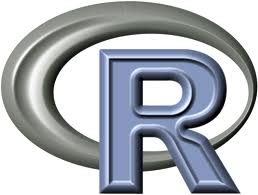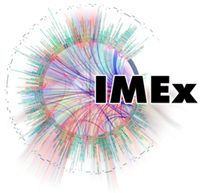Difference between revisions of "iRefIndex"
(updating to new front page) |
|||
| Line 1: | Line 1: | ||
| − | + | {|class="wikitable" style="text-align:left; clear: left" border="0" cellpadding="10" | |
| + | |<imagemap> | ||
| + | Image:iRefIndex_logo.png|100x100px | ||
| + | default [[iRefIndex#A_reference_index_for_protein_interaction_data]] | ||
| + | </imagemap> | ||
| + | | '''About iRefIndex''' | ||
| + | |||
| + | iRefIndex provides an index of protein interactions available in a number of primary interaction databases including BIND, BioGRID, CORUM, DIP, HPRD, IntAct, MINT, MPact, MPPI and OPHID. | ||
| + | |||
| + | [[iRefIndex#A_reference_index_for_protein_interaction_data|Read more]] | ||
| + | |||
| + | |- | ||
| + | |<imagemap> | ||
| + | Image:pubmed-logo.png|100x100px | ||
| + | default [[iRefIndex_Citations]] | ||
| + | </imagemap> | ||
| + | | [[iRefIndex_Citations | '''Publications, citing, citations and further reading''']] | ||
| + | |||
| + | iRefIndex related publications, references for source databases and works citing and using the iRefIndex. | ||
| − | |||
|- | |- | ||
|<imagemap> | |<imagemap> | ||
| − | Image: | + | Image:download-icon.png|100x100px |
default [[iRefIndex]] | default [[iRefIndex]] | ||
| − | </imagemap> | + | </imagemap> |
| + | | [[README_MITAB2.6_for_iRefIndex_8.0|'''Download''']] | ||
| + | |||
| + | Download iRefIndex version 8.0 in PSI-MITAB tab-delimited format via FTP. | ||
| + | |- | ||
| + | |<imagemap> | ||
| + | Image:CytoscapeLogo.png|100x100px | ||
| + | default [[iRefScape]] | ||
| + | </imagemap> | ||
| + | | [[iRefScape|'''iRefScape''']] | ||
| + | |||
| + | iRefScape is a plugin for [http://www.cytoscape.org/ Cytoscape] that exposes iRefIndex data as a navigable graphical network. | ||
| + | |- | ||
| + | |<imagemap> | ||
| + | Image:firefox.png|100x100px | ||
| + | default [http://wodaklab.org/iRefWeb/] | ||
| + | </imagemap> | ||
| + | | [http://wodaklab.org/iRefWeb/ '''iRefWeb'''] | ||
| + | |||
| + | iRefWeb provides a searchable web interface to the iRefIndex. This interface was developed as part of a collaboration with the Wodak group at the hospital for Sick Children in Toronto, Canada. | ||
| + | |||
|- | |- | ||
|<imagemap> | |<imagemap> | ||
| − | Image: | + | Image:R-logo.jpg|100x100px |
| − | default [[ | + | default [[iRefR]] |
| − | </imagemap> | + | </imagemap> |
| − | [[ | + | | [[iRefR|'''iRefR''']] |
| + | |||
| + | An R package providing access to iRefIndex data. | ||
| + | |||
|- | |- | ||
|<imagemap> | |<imagemap> | ||
| − | Image: | + | Image:ws-icon.jpg|100x100px |
| − | default [[ | + | default [[README_PSICQUIC_web_services_for_iRefIndex]] |
| − | </imagemap> | + | </imagemap> |
| + | | [[README_PSICQUIC_web_services_for_iRefIndex|'''Web-services''']] | ||
| + | |||
| + | iRefIndex PSICQUIC web services are now running on release 8.0 of iRefIndex | ||
| + | |||
|- | |- | ||
|<imagemap> | |<imagemap> | ||
| − | Image: | + | Image:Youtube-256.png|100x100px |
| − | default [ | + | default [[iRefIndex_Videos]] |
</imagemap> | </imagemap> | ||
| + | |[[iRefIndex_Videos|'''iRefIndex Videos''']] | ||
| + | |||
|- | |- | ||
| − | |iRefIndex | + | |<imagemap> |
| − | + | Image:mail.png|100x100px | |
| + | default [[iRefIndex#Contact]] | ||
| + | </imagemap> | ||
| + | | [[iRefIndex#Contact|'''Contact info''']] | ||
| + | |||
| + | |||
| − | |||
|- | |- | ||
| − | | < | + | |<imagemap> |
| − | | | + | Image:info.png|100x100px |
| − | </ | + | default [[Sources_iRefIndex_8.0]] |
| + | </imagemap> | ||
| + | | '''Technical information on the iRefIndex database''' | ||
| + | |||
| + | Source data sets: http://irefindex.uio.no/wiki/Sources_iRefIndex_8.0 | ||
| + | |||
| + | Statistics: http://irefindex.uio.no/wiki/Statistics_iRefIndex_8.0 | ||
| + | |||
| + | Build process: [[iRefIndex_Manual]] | ||
| + | |||
| + | Feedback files: [[README_iRefIndex_Feedback_8.0]] | ||
| + | |||
| + | Normalization of MI cv terms: [[Mapping_of_terms_to_MI_term_ids_-_iRefIndex_8.0]] | ||
| + | |||
| + | Canonicalization: [[Canonicalization]] | ||
| + | |||
| + | Disease Groups: [[DiG:_Disease_groups|'''DiG: Disease Groups''']] | ||
| + | All iRefIndex pages and Archived releases: [[iRefIndex#All_iRefIndex_Pages | see below]] | ||
| + | License and disclaimer: [[iRefIndex#License_and_Disclaimer | see below]] | ||
| − | |||
| − | + | |- | |
| + | | | ||
| + | | <facebook-like /> | ||
| − | |||
| − | + | . | |
| − | + | |} | |
| − | + | == A reference index for protein interaction data == | |
| − | |||
| − | + | iRefIndex provides an index of protein interactions available in a number of primary interaction databases including [http://bond.unleashedinformatics.com/ BIND], [http://www.thebiogrid.org/ BioGRID], [http://mips.gsf.de/genre/proj/corum/index.html CORUM], [http://dip.doe-mbi.ucla.edu/ DIP], [http://www.hprd.org/ HPRD], [http://www.ebi.ac.uk/intact/site/index.jsf IntAct], [http://mint.bio.uniroma2.it/mint/Welcome.do MINT], [http://mips.gsf.de/genre/proj/mpact MPact], [http://mips.gsf.de/proj/ppi/ MPPI] and [http://ophid.utoronto.ca/ OPHID]. This index includes multiple interaction types including physical and genetic (mapped to their corresponding protein products) as determined by a multitude of methods. This index allows the user to search for a protein and retrieve a non-redundant list of interactors for that protein. | |
| − | [http:// | ||
| − | + | iRefIndex assigns a global unique identifier (rigid) which looks like 'tjWXXjgPyHyT2J6EwED8zK2x18U' to identify interactions that are identical (according to the sequence and taxon ids of the interactors). iRefIndex also assigns similar looking keys to protein interactors. These keys are global meaning they can be generated by anyone using the method described in the paper. This method allows users to integrate their own data with the iRefIndex in a way that ensures proteins with the exact same sequence will be represented only once. | |
| − | |||
| − | + | == Publications and further reading == | |
| − | + | iRefIndex related publications, references for source databases and works citing and using the iRefIndex are provided here: [[iRefIndex_Citations]] | |
| − | |||
| Line 82: | Line 146: | ||
:During the process of data consolidation, iRefIndex uses a sophisticated method to keep track of potential problems with source records such as outdated or unfound protein identifiers or incorrectly assigned taxonomy identifiers. These data are provided as feedback files to source interaction databases for correction, clarification or improvements to our own system. This process will help to harmonize data representation and improve the overall quality of interaction records for all source databases. This process will also help source databases to exchange data with one another. | :During the process of data consolidation, iRefIndex uses a sophisticated method to keep track of potential problems with source records such as outdated or unfound protein identifiers or incorrectly assigned taxonomy identifiers. These data are provided as feedback files to source interaction databases for correction, clarification or improvements to our own system. This process will help to harmonize data representation and improve the overall quality of interaction records for all source databases. This process will also help source databases to exchange data with one another. | ||
| − | ==iRefIndex availability | + | == iRefIndex availability == |
| − | + | iRefIndex is made available in a number of formats: MITAB tab-delimted text files, web-interface, Cytoscape plugin, web-services. and R-interface See the links at the top of this page. | |
| − | + | == Credits and collaborations == | |
| − | + | '''Sabry Razick and Ian Donaldson''' developed iRefIndex at the Biotechnology Centre of Oslo, University of Oslo. | |
| − | + | '''Paul Boddie''' provides ongoing maintenance and development. | |
| − | + | '''George Magklaras''' provides systems engineer support and [http://www.no.embnet.org/ EMBNet Norway] provided hardware support. | |
| − | + | '''Antonio Mora''' developed [[iRefR|iRefR]]. | |
| − | |||
| − | |||
| − | + | '''Katerina Michalickova''' developed [[DiG:_Disease_groups|Disease groups]]. | |
| + | '''Brian Turner and Andrei Turinsky''' from the [http://wodaklab.org/ws/ Wodak group] at the Hospital for Sick Children in Toronto, Canada developed the [http://wodaklab.org/iRefWeb/ iRefWeb interface]. | ||
| + | <imagemap> | ||
| + | Image:IMEx_logo_webmedium.jpg|100x100px | ||
| + | default [http://www.psimex.org] | ||
| + | </imagemap> | ||
| − | iRefIndex | + | iRefIndex is a PSIMex partner: http://www.psimex.org |
| − | |||
| − | |||
| − | |||
| − | |||
| − | |||
| − | |||
| − | |||
| − | |||
| − | |||
| − | |||
| − | |||
| − | |||
| − | |||
| − | |||
| − | |||
| − | |||
| + | <!-- | ||
=== iRefWeb in the NCBI LinkOut programme === | === iRefWeb in the NCBI LinkOut programme === | ||
Many [http://www.ncbi.nlm.nih.gov/gene Entrez Gene] records provided by NCBI contain links to iRefWeb in the [http://www.ncbi.nlm.nih.gov/projects/linkout/index.html LinkOut] section, allowing users to consult iRefWeb for related protein interactions when browsing gene information. The software which exposes iRefIndex information to the LinkOut programme can be found on the [[iRefWeb LinkOut Generator]] page. | Many [http://www.ncbi.nlm.nih.gov/gene Entrez Gene] records provided by NCBI contain links to iRefWeb in the [http://www.ncbi.nlm.nih.gov/projects/linkout/index.html LinkOut] section, allowing users to consult iRefWeb for related protein interactions when browsing gene information. The software which exposes iRefIndex information to the LinkOut programme can be found on the [[iRefWeb LinkOut Generator]] page. | ||
| − | + | --> | |
| − | |||
| − | |||
| − | |||
| − | |||
| − | |||
| − | |||
| − | |||
| − | |||
| − | |||
| − | |||
| − | |||
| − | |||
| − | |||
| − | |||
| − | |||
| − | |||
| − | |||
| − | |||
| − | |||
| − | |||
| − | |||
| − | |||
| − | |||
| − | |||
| − | |||
| − | |||
---- | ---- | ||
| − | == License and | + | == License and disclaimer== |
Data released on the public FTP site is released under Creative Commons Attribution License http://creativecommons.org/licenses/by/2.5/ | Data released on the public FTP site is released under Creative Commons Attribution License http://creativecommons.org/licenses/by/2.5/ | ||
| Line 166: | Line 192: | ||
---- | ---- | ||
| − | |||
| − | + | == Contact == | |
| − | |||
| − | |||
| − | |||
| − | |||
| − | |||
| − | |||
| − | |||
| − | == | ||
| − | |||
| − | |||
| − | |||
| − | |||
| − | |||
| − | |||
| − | |||
| − | |||
| − | |||
| − | |||
| − | |||
| − | |||
| − | |||
| − | |||
| − | |||
| − | |||
| − | |||
| − | |||
| − | |||
| − | |||
| − | |||
| − | |||
| − | |||
| − | |||
| − | |||
| − | |||
| − | |||
| − | |||
| − | |||
| − | |||
| − | |||
| − | |||
| − | |||
| − | |||
| − | |||
| − | |||
| − | |||
| − | |||
| − | |||
| − | |||
| − | |||
| − | |||
| − | |||
| − | |||
| − | |||
| − | |||
| − | + | Suggestions, requests and comments are welcome. | |
| − | < | + | <pre>ian.donaldson@biotek.uio.no</pre> |
| − | + | Found in real-life: [http://www.biotek.uio.no/research/donaldson_group/ here]. | |
| − | |||
| − | |||
| − | |||
| − | |||
| − | |||
| − | |||
| − | |||
| − | |||
| − | |||
| − | |||
| − | |||
| − | |||
| − | |||
| − | |||
| − | |||
| − | |||
| − | |||
| − | |||
| − | + | . | |
| − | + | <imagemap> | |
| + | Image:google-groups-logo.gif|200x200px | ||
| + | default [[http://groups.google.com/group/irefindex?hl=en]] | ||
| + | </imagemap> | ||
| + | [http://groups.google.com/group/irefindex?hl=en '''iRefIndex Google Group''' Announcements and discussion] | ||
| − | |||
| − | + | . | |
| − | |||
== All iRefIndex Pages == | == All iRefIndex Pages == | ||
Revision as of 12:31, 17 October 2011
| About iRefIndex
iRefIndex provides an index of protein interactions available in a number of primary interaction databases including BIND, BioGRID, CORUM, DIP, HPRD, IntAct, MINT, MPact, MPPI and OPHID. | |
| Publications, citing, citations and further reading
iRefIndex related publications, references for source databases and works citing and using the iRefIndex. | |
| Download
Download iRefIndex version 8.0 in PSI-MITAB tab-delimited format via FTP. | |
| iRefScape
iRefScape is a plugin for Cytoscape that exposes iRefIndex data as a navigable graphical network. | |
| iRefWeb
iRefWeb provides a searchable web interface to the iRefIndex. This interface was developed as part of a collaboration with the Wodak group at the hospital for Sick Children in Toronto, Canada. | |
| iRefR
An R package providing access to iRefIndex data. | |
| Web-services
iRefIndex PSICQUIC web services are now running on release 8.0 of iRefIndex | |
| iRefIndex Videos | |
| Contact info
| |
| Technical information on the iRefIndex database
Source data sets: http://irefindex.uio.no/wiki/Sources_iRefIndex_8.0 Statistics: http://irefindex.uio.no/wiki/Statistics_iRefIndex_8.0 Build process: iRefIndex_Manual Feedback files: README_iRefIndex_Feedback_8.0 Normalization of MI cv terms: Mapping_of_terms_to_MI_term_ids_-_iRefIndex_8.0 Canonicalization: Canonicalization Disease Groups: DiG: Disease Groups All iRefIndex pages and Archived releases: see below License and disclaimer: see below
| |
| fShare this page on Facebook
|
Contents
A reference index for protein interaction data
iRefIndex provides an index of protein interactions available in a number of primary interaction databases including BIND, BioGRID, CORUM, DIP, HPRD, IntAct, MINT, MPact, MPPI and OPHID. This index includes multiple interaction types including physical and genetic (mapped to their corresponding protein products) as determined by a multitude of methods. This index allows the user to search for a protein and retrieve a non-redundant list of interactors for that protein.
iRefIndex assigns a global unique identifier (rigid) which looks like 'tjWXXjgPyHyT2J6EwED8zK2x18U' to identify interactions that are identical (according to the sequence and taxon ids of the interactors). iRefIndex also assigns similar looking keys to protein interactors. These keys are global meaning they can be generated by anyone using the method described in the paper. This method allows users to integrate their own data with the iRefIndex in a way that ensures proteins with the exact same sequence will be represented only once.
Publications and further reading
iRefIndex related publications, references for source databases and works citing and using the iRefIndex are provided here: iRefIndex_Citations
Long term goals of the iRefIndex project
We believe that protein interaction data hold incredible potential for biomedical research. Presently, these data are collected and archived by multiple groups around the world and the number of groups taking part in this work is growing rather than diminishing.
As such, it is important that these databases have the means to effectively exchange and compare data and that they are curating and representing data using similar standards in order to make their data accessible and allow effective use.
To this end, the iRefIndex project has three long term objectives:
- 1) to facilitate exchange of interaction data between interaction databases.
- The iRefIndex paper describes a method for assigning unique and global identifiers to protein interactors, interactions and complexes. This method is independent of the iRefIndex resource and may be used by anyone to facilitate exchange and consolidation of data.
- 2) to consolidate interaction data from multiple sources.
- The method has been used by to index interaction records from multiple sources. The resulting iRefIndex may be used search for the existence of interaction data for any protein regardless of the original resource. Nine interaction databases have been incorporated so far, others will follow.
- 3) to provide feedback to source interaction databases.
- During the process of data consolidation, iRefIndex uses a sophisticated method to keep track of potential problems with source records such as outdated or unfound protein identifiers or incorrectly assigned taxonomy identifiers. These data are provided as feedback files to source interaction databases for correction, clarification or improvements to our own system. This process will help to harmonize data representation and improve the overall quality of interaction records for all source databases. This process will also help source databases to exchange data with one another.
iRefIndex availability
iRefIndex is made available in a number of formats: MITAB tab-delimted text files, web-interface, Cytoscape plugin, web-services. and R-interface See the links at the top of this page.
Credits and collaborations
Sabry Razick and Ian Donaldson developed iRefIndex at the Biotechnology Centre of Oslo, University of Oslo.
Paul Boddie provides ongoing maintenance and development.
George Magklaras provides systems engineer support and EMBNet Norway provided hardware support.
Antonio Mora developed iRefR.
Katerina Michalickova developed Disease groups.
Brian Turner and Andrei Turinsky from the Wodak group at the Hospital for Sick Children in Toronto, Canada developed the iRefWeb interface.
iRefIndex is a PSIMex partner: http://www.psimex.org
License and disclaimer
Data released on the public FTP site is released under Creative Commons Attribution License http://creativecommons.org/licenses/by/2.5/
Data is distributed in the hope that it will be useful, but WITHOUT ANY WARRANTY; without even the implied warranty of MERCHANTABILITY or FITNESS FOR A PARTICULAR PURPOSE.
Contact
Suggestions, requests and comments are welcome.
ian.donaldson@biotek.uio.no
Found in real-life: here.
.
iRefIndex Google Group Announcements and discussion
.
All iRefIndex Pages
Follow this link for a listing of all iRefIndex related pages (archived and current).








